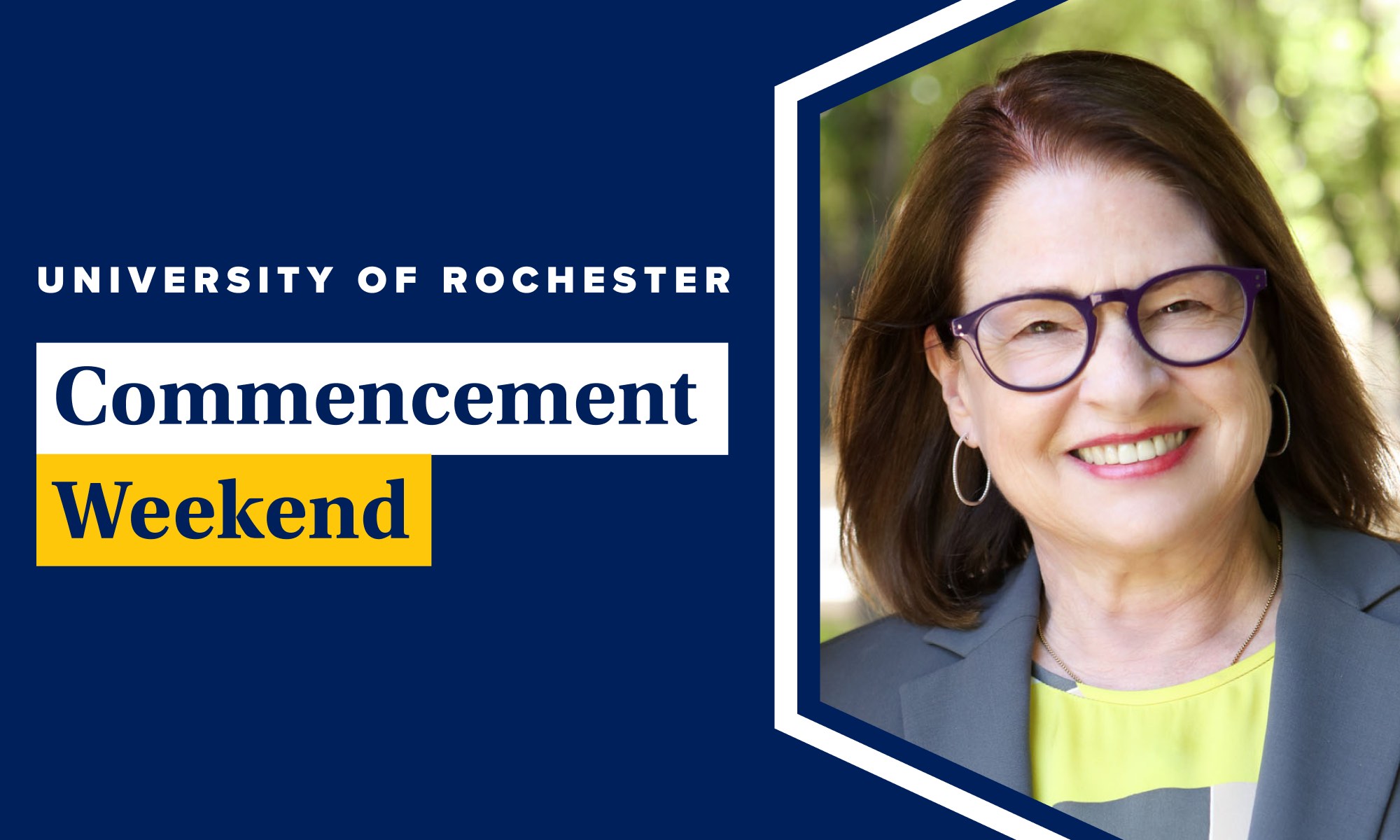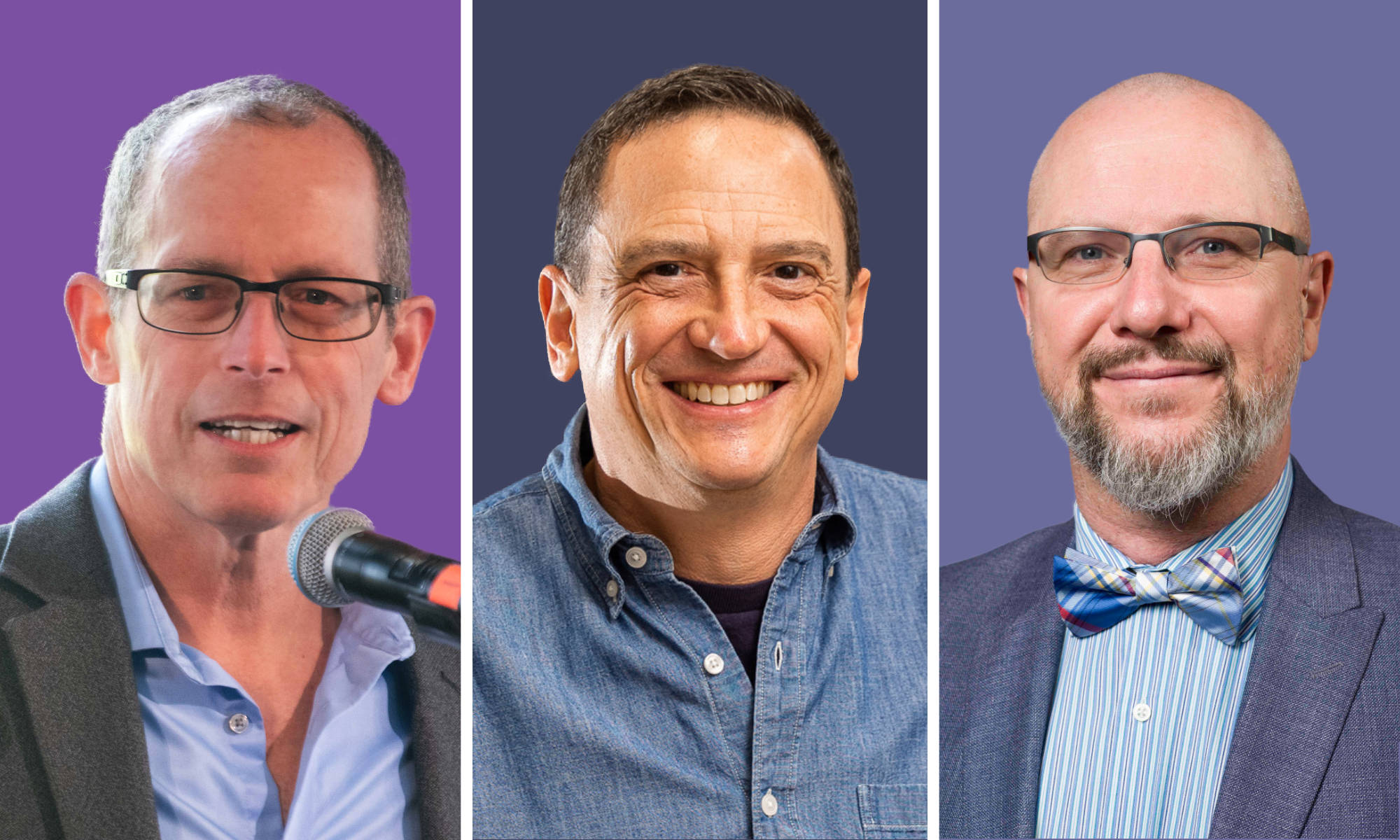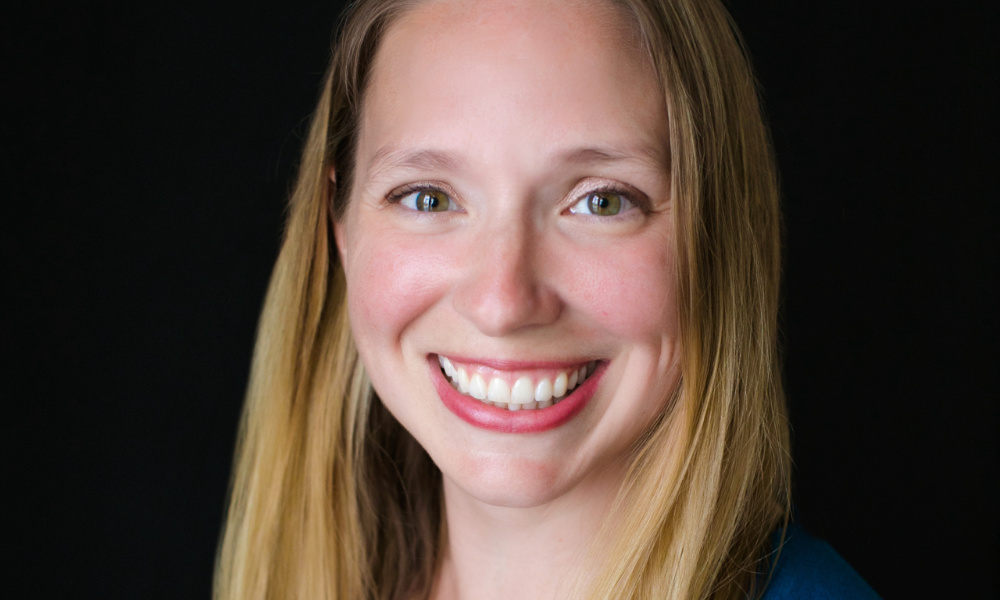Earlier this month, researchers sat in their living rooms in California, helping to coordinate laser experiments at the Laboratory for Laser Energetics in Rochester, New York.
Just as if they were sitting in the control room themselves.
How? By participating in Remote PI—essentially a “souped-up Zoom meeting, with control room screens, audio, and video being shared,” says Samuel Morse, director of LLE’s Omega Laser Facility.
It’s an example of how University of Rochester researchers are adapting to social distancing and other COVID-19 preventive measures as they reopen their labs and research facilities after an eight-week shutdown. In doing so, they are discovering that some of the adaptations are actually an improvement over what they were doing before.
Rochester Restart
Find the latest information on the University’s COVID-19 restart and recovery efforts.
COVID-19 symptoms or exposure?
Find out what to do if you or a close contact have symptoms or think you may have been exposed.
Given the disruption of air travel, “the new Remote PI environment that we’ve created is something that many PIs (principal investigators) are going to want to use to interact with the facility,” says Morse. “We’ve gone to an all-electronic transfer of information (during the experimental shots) that is faster and just as reliable as the old paper transactions that occurred when the PIs were actually present in the control room.”
Even when air travel is back to normal, Remote PI will give investigators the option to stay at their home institutions rather than spend time traveling to and from Rochester. It will enable even more collaborators to “sit in” on the experiments remotely, Morse says.
A ‘rigorous and tiered’ reopening
The University of Rochester has been an innovator in fields as diverse as geology, optics, medical education, economics, political theory, and human behavior. The University’s Medical Center is a leader in neuroscience and in developing vaccines used worldwide. The Laboratory for Laser Energetics is a national resource for research into the interaction of intense radiation with matter.
River Campus faculty in the School of Arts & Sciences, Hajim School of Engineering & Applied Sciences, Simon Business School, and Warner School of Education—many of whom are also affiliated with the University’s Goergen Institute for Data Science—have pioneered statistical methods of research in economics, political science, and clinical and social sciences, and have contributed major advancements in biomedical imaging, quantum optics, evolutionary biology, and visual and cultural studies.
When New York state ordered a shutdown of all nonessential activities in March as part of its NY Pause program, only the following areas of University research were permitted to continue on-site:
- Approved research on COVID-19
- Approved therapeutic clinical trials
- Approved ongoing essential experiments (e.g., long-term animal studies needing harvesting of tissues)
Essentially this meant closing all labs on the River Campus and at LLE.
Now research is “rebooting” all across the University, in lab facilities big and small, from the 18,000-square-foot Omega laser bay, to the 2,000-square-foot URnano cleanroom, to the Rush Rhees Library cubbyhole where history professor Mike Jarvis uses five high-powered computers to digitally reconstruct historic structures from Bermuda and the coast of Ghana.
When New York state approved a phased reopening of businesses and other activities in the Finger Lakes region last month, LLE reopened on May 18 with approximately 30 to 40 percent of its workforce. At the River Campus, John Tarduno, dean of research for Arts, Sciences & Engineering, has approved the reopening of 97 faculty-led science and engineering research laboratories, three multi-user facilities in science and engineering, and seven research spaces in social sciences and humanities.
“This represents about 500 people, including faculty, research scientists, technicians, graduate students and a few undergraduates supported on grants,” Tarduno says. “We have a rigorous and tiered approval process involving department chairs, program directors, and deans with an eye toward reviewing compliance with training, health monitoring, PPE use, and lab use, designed to allow social distancing in a research setting.”
Here’s a closer look at what is happening in variety of labs across the University.
Time sharing and staggered shifts
Each year hundreds of researchers from across the world come to the Laboratory for Laser Energetics at the University of Rochester to use its powerful lasers for experiments involving high-energy-density physics, inertial confinement fusion, and security of the national stockpile of nuclear weapons.
In fact, about 60 percent of the laser shots on LLE’s Omega and Omega-EP lasers are conducted for researchers at Lawrence Livermore, other national labs, and universities and research institutions worldwide.
With Remote PI in place, the Omega facility has achieved 25 to 26 shots a week on each of the laser systems since reopening and going through an initial shakedown period. “We are at the same cadence we were when PIs were on site,” Morse says. “I don’t think we’re going to take a hit to the shot rate.”
Douglas Jacobs-Perkins, LLE’s chief safety officer and a scientist there, says 175 of LLE’s 540 researchers, students, and employees are back on site, distributed over multiple shifts.
They primarily involve staff engaged in:
- Operating and maintaining LLE’s research lasers (OMEGA, OMEGA EP, MTW)
- Laser technology research
- Fabrication of the targets used for laser experiments
- Manufacturing in LLE’s machine shop and its optical coating lab
- Assembly of diagnostics and equipment scheduled for installation on the Omega facilities
- Building maintenance and cleaning
Also, a limited number of graduate students are back in the facility conducting thesis research.
“Social distancing is being enforced, masks are worn in all public places, and the protocol we have in place now is setting a good precedent for how we will continue to operate when we have more people on site,” Jacobs-Perkins says, referring to the LLE COVID-19 Workplace Safety Policy now in force.
LLE has adopted time sharing and staggered shifts among employees now back in the building so offices are not occupied by more than one person at a time. The control rooms for Omega laser experiments were reconfigured so that all consoles are at least six feet apart, and no operators are facing each other or sitting side by side.
All staff underwent training in the new protocols, engendering lots of questions, some healthy “push back,” and constructive suggestions that have been adopted, Jacobs-Perkins says. “So there has been a lot of give and take, and it’s been very effective.
“I think what has probably helped make this effective is we established the overall policies for what people had to do, but the supervisors (of each division) had to determine how to effectively implement those policies in their respective work areas. I think that has given people pride of ownership.”
Carefully planned experiments
The Department of Biomedical Engineering is a center of research in biomechanics, biomaterials, ultrasound, optics, cell and tissue engineering, nanotechnology, imaging, and neuroengineering. Its close proximity to the Medical Center fosters opportunities for the department’s faculty to collaborate with clinicians and medical researchers.
All but one of the department’s nearly 20 faculty-led labs and its shared research facilities have now reopened, and the remaining faculty-led lab is in process of doing so.
“Dean Tarduno has been working heroically to help us all re-open our research labs. He has set up an effective procedure for keeping people safe and productive at the same time,” says Diane Dalecki, the department chair and Kevin J. Parker Distinguished Professor in Biomedical Engineering.
For example, no more than three people are allowed in any of the faculty-led labs at one time—and fewer in lab sub-rooms. And only one person at a time is allowed to use the smaller shared labs used for microscopy, cell culture, mechanical testing, and other core spaces, Dalecki says.
The protocol has required a carefully orchestrated system of scheduling—both within and among labs—to ensure that social distancing requirements are met. “This has required students and staff to think about their experiments carefully, figuring out ahead of time what the next step will be when an experiment gets to certain point, so they can schedule their time in the lab accordingly,” Dalecki says.
Some of the faculty-led labs have set up regular daily shifts when individual staff members and students can come in without violating the social distancing requirements. Other faculty-led labs have adopted a more flexible calendaring system monitored by the PI (faculty principal investigator).
The department’s committee that oversees the shared labs, chaired by faculty members Scott Seidman and Kanika Vats, “has worked very hard to prepare the protocols for those important shared resource spaces.”
So far, so good, Dalecki says. On the plus side, the experience students are gaining in carefully planning their experiments and scheduling lab time in advance “will have real value for them when they go into industry and they have to plan their experiments for a long period of time, and work together with one or more teams.”
Even the shutdown, disruptive as it was, had some benefits, Dalecki says. It allowed some of her graduate students to devote additional, undistracted time to writing their thesis proposals and scientific articles.
The shutdown also demonstrated that Zoom meetings “have some real benefits in certain circumstances,” and will “absolutely continue” to be used, Dalecki says. “You can bring experts ‘in’ much more easily to talk with your labs. It is an easy way to share data. And it has been seamless in terms of being able to get people together for lab meetings.”
Keeping a ‘clean room’ clean—and safe
Brian McIntye, director of operations at the Integrated Nanosystems Center (URnano) is understandably proud that the research and fabrication lab, which includes a clean room and separate metrology and microscopy rooms, is back in business.
“We were the first multi-user facility on the River Campus to reopen,” he says. “And many of the clean rooms at our peer institutions are still shut down.”
For example, McIntyre is currently helping a Medical Center researcher with metrology for a protein imaging project. A physics research group is fabricating qubits and other nanoscale structures. Other researchers are doing thin film deposition for electronic and optical devices or doing etching and reactive plasma processing.
“We’re fully up to where we were before we closed down,” McIntyre says.
The URnano clean room is the largest clean space on River Campus. Even before COVID-19, researchers using the room were required to don hairnets, gloves, head-to-toe gowns—even beard bags, if necessary—to preserve the reduced-air particle environment needed for researching and fabricating materials at the nanoscale.
So, at first glance, it might seem like few adjustments would be needed for the facility to reopen. However, several changes were made to the center’s already stringent safety and operating protocols to protect against Covid-19—starting at URnano’s “front door.”
“We needed to ensure that the people going into the clean room were properly isolated, starting at the hallway,” says McIntyre.
Clean room staff have been handing out gloves even before visiting researchers touch the outside doorknob, to prevent possible contamination of the surface. And they’ve made sure the visitors shed their COVID-19 protective face masks, because even N95 masks shed fibers that will contaminate a clean room, McIntyre says.
Initially that posed a problem, because clean room masks have recently been in short supply—presumably because manufacturers have switched to meeting the demand for N95 masks. So, McIntyre proposed that URnano make its own clean room masks from the center’s supply of clean room compatible cloth. An initial 150 masks have been made by Ralph Wiegandt, a research conservator and former NSF researcher at the George Eastman Museum, working in a clean area in his home. Weigandt is working on another 100.
Out of an abundance of caution, occupancy is limited even in the clean room to no more than three external users (with one URnano staff overseeing) at a time to help ensure social distancing, McIntyre says. He has also staggered his hours with staff engineers Nursah Kokbudak and James Mitchell, who help run URnano, “so if one of us gets sick, we won’t all get sick.”
“We’re going the extra mile.”
Striking a home/work balance
Amid narrow hallways and small offices on the fourth floor of Rush Rhees Library, Michael Jarvis, associate professor in the Department of History, has created a small but high-powered computer lab. The former director of Digital Media Studies uses photogammetry to create 3D virtual reconstructions of the archaeological digs he has conducted in Bermuda and the historic slave trade forts he has helped survey along the coast of Ghana.
Five high-end computers store several hundred thousand images that Jarvis and his students have captured using laser scanning, aerial drones, and DSLRs. They also store the exciting interactive videogames they are creating that allowing participants to virtually wander through historic structures, for example, or reenact a shipwreck in Bermuda.
Reopening this lab will not require carefully orchestrated access to maintain proper social distancing. The room is so small, that even if people using computers at opposite ends met the distancing requirements, it still would “probably not be good for them to be working together and breathing the same air for six to eight hours,” Jarvis says.
And that’s okay. Even before COVID-19, Jarvis was able to do much of his work remotely—in the field or at home. And as the shutdown loomed, he retrieved one of the computers from his lab and took it home, giving him access to all the stored data and processing power he needs. “That’s the beauty of data—I can bring home an entire library of Dutch sources, 10,000 Bermuda deeds, and a dozen castle models and still have empty space on a 10 TB hard drive,” Jarvis notes. He’ll still want students to have access to the lab when they need to do work that is not feasible remotely. However, since he’s starting a year-long leave from teaching to focus on research, he’ll be working primarily with a handful of graduate students, limiting the need for more than one student to have access to the lab.
So, the bigger challenge for Jarvis right now is not proper use of PPE or maintaining social distancing as his research lab “reboots.” Instead, it is finding a proper balance while continuing to do much of his work remotely.
Jarvis spent so much time sitting in front his computer while teaching classes remotely this spring, that he developed a slipped disc.
“When you’re an academic, and you can work from home, the danger is that the difference between home life and work life collapses, and you end up working all the time,” Jarvis says.
“Now I’m trying to strike more of a balance.” Getting more exercise, for example. And limiting the time spent continuously staring at computers.
“And to think it’s only taken me 30 years to learn these basic lessons,” he says, laughing.



